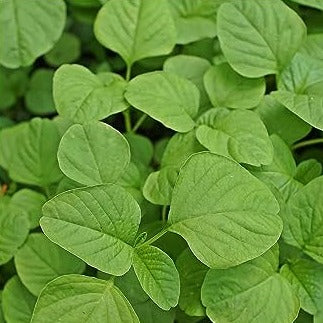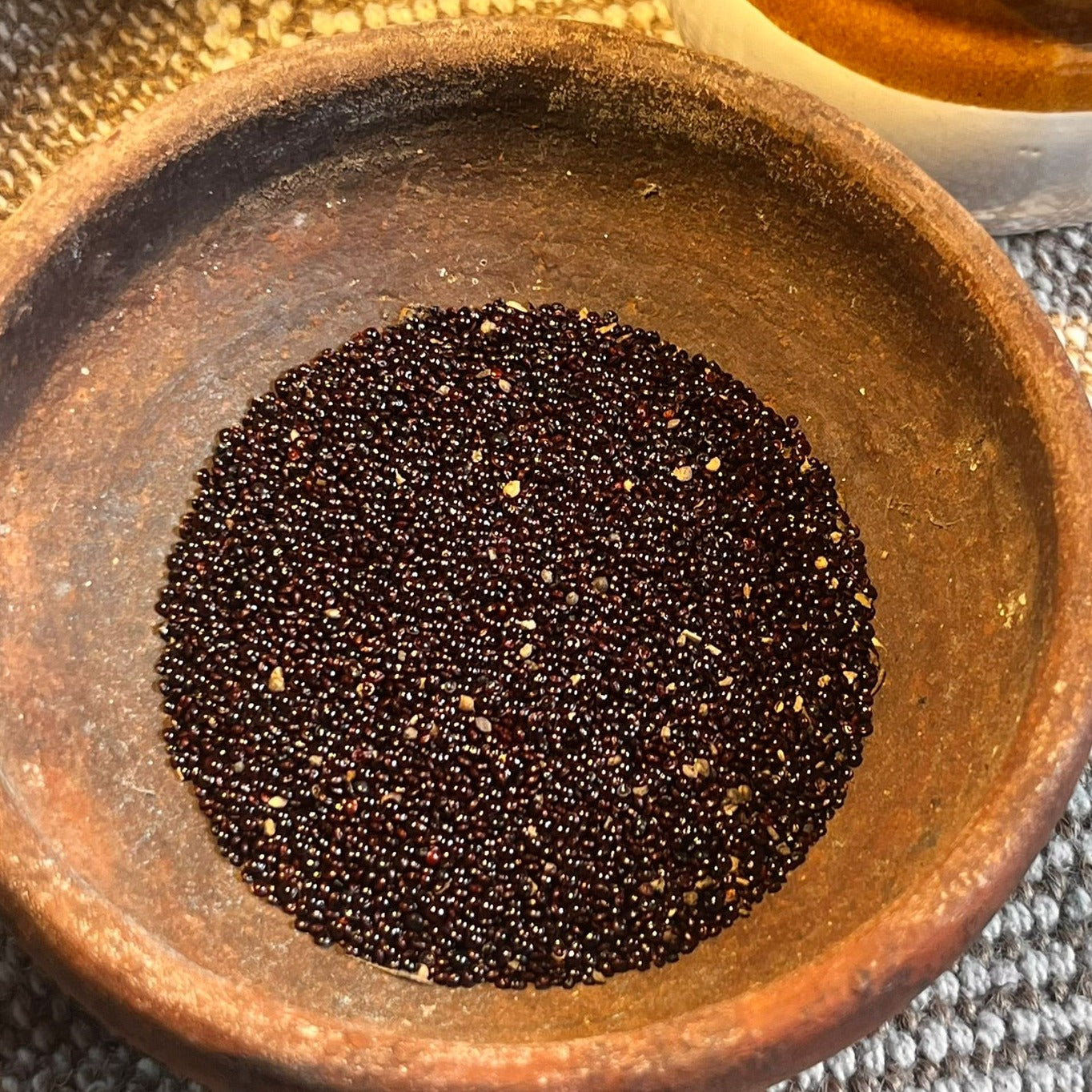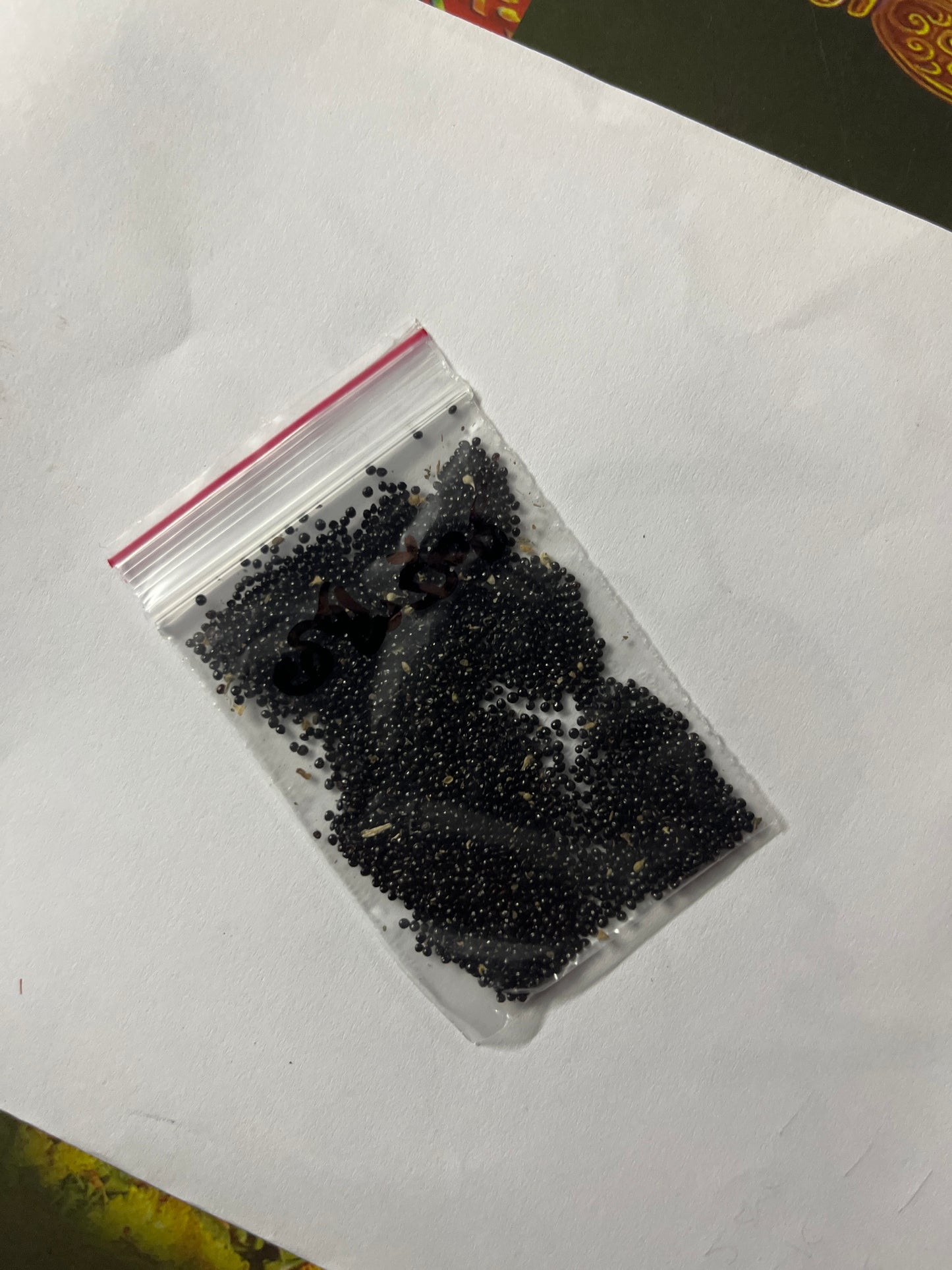Thotakoora /Amaranth Seeds
Thotakoora /Amaranth Seeds
Couldn't load pickup availability
Product Description - Amaranth Seeds - Open Pollinated
Specifications of Amaranth Seeds
Amaranth is a fast-growing leafy vegetable known for its excellent germination rate and ease of cultivation. It thrives in a range of climates and soil types, making it ideal for both beginner and experienced gardeners. It can be grown in open areas or in grow bags, which provide root aeration, portability, and easy maintenance.
Germination Time: 5-10 days
Hours of Sunlight: 4-6 hours, partial to full sun
Ideal Climate for Sowing: Suitable for all seasons, especially warmer months
Plant Height: 1-3 feet, depending on the variety
Fertilizer Requirements: Organic compost, vermicompost, or decomposed cow dung every 10-15 days for lush growth
Life Span: 4-6 months
Ideal Growing Temperature: 20-30°C
Harvesting Time: 30-45 days for tender leaves, 70-80 days for mature seeds
Maintenance Required: Low to Moderate
Ideal Grow Bag Size: 6-inch height, 12-inch diameter, or larger for higher yields
Benefits / Uses of Amaranth
Amaranth is rich in essential vitamins like A, C, and K, minerals such as iron, calcium, and magnesium, and antioxidants. It supports immune health, improves digestion, and boosts metabolism. Amaranth’s high fiber content promotes heart health, while its bioactive compounds contribute to overall wellness. These open-pollinated seeds allow for sustainable gardening, as seeds can be saved and reused from each harvest.
Planting and Care for Amaranth
Each amaranth seed contains a dormant plant ready to sprout with the right conditions. This crop is easy to grow and requires minimal care, flourishing in soil with moderate moisture levels.
Sowing Amaranth Seeds
To plant, prepare moist soil in a grow bag and sow seeds about 1/4 inch deep, covering lightly with soil. For faster germination, pre-soak seeds overnight in water. Maintain a warm, moderately humid environment for sprouting, and keep out of direct sunlight until seedlings emerge.
Growing Amaranth
Amaranth is a warm-season crop that thrives with regular moisture. Keep soil slightly moist by watering in the morning or evening, avoiding overwatering to prevent root issues. Space plants apart for good air circulation, which helps prevent fungal growth. Using natural growth promoters like seaweed extract or panchagavya can enhance growth and resilience.
Harvesting Amaranth
Leaves can be harvested within 30-45 days by cutting from the base to encourage continued growth. For seeds, allow plants to fully mature (about 70-80 days) and harvest seeds once flower heads brown. Dry seeds in a shaded area before storing.
Precautions While Growing Amaranth
Amaranth grows best in loamy soil with good water retention and aeration. Soil pH should be between 5.5 and 7.5 for optimal results. Avoid overcrowding to improve airflow and reduce the risk of disease.
Common Problems Affecting Amaranth Plants and Solutions
Amaranth is generally resilient but can occasionally face pests like aphids, caterpillars, and powdery mildew. Regular checks and applications of neem oil or organic insecticides help control pests. Ensure good drainage and airflow to prevent mildew. Crop rotation and composting also help keep soil healthy.
Other Names for Amaranth
- Botanical Name: Amaranthus sp.
- Tamil: கேழ்வரகு (Keḻvaragu)
- Malayalam: ചീര (Chīra)
- Kannada: ಹರವೆ (Harave)
- Telugu: తోట (Tōṭa)
- Marathi: राजगिरा (Rājgira)
- Hindi: चौलाई (Chaulai)
- Bengali: শাক (Shāk)
Amaranth is a versatile, nutrient-packed leafy green that’s easy to grow and perfect for a nutritious addition to your garden!
Frequently Asked Questions (FAQ)
Q1: How long does it take for Amaranth seeds to germinate?
A: Amaranth seeds usually germinate within 5-10 days if kept in warm, moist soil. Pre-soaking the seeds overnight can help speed up the germination process.
Q2: Can Amaranth be grown indoors?
A: Yes, Amaranth can be grown indoors in containers or grow bags, as long as it receives 4-6 hours of indirect sunlight daily. Using grow lights can also support indoor growth if natural sunlight is limited.
Q3: How much water does Amaranth require?
A: Amaranth thrives in slightly moist soil, so water regularly but avoid overwatering. Sprinkling water in the morning or evening helps maintain adequate moisture without causing root issues.
Q4: What type of soil is best for growing Amaranth?
A: Amaranth grows best in loamy soil with good water retention and aeration. A pH level between 5.5 and 7.5 is ideal for optimal growth and yield.
Q5: How often should I fertilize Amaranth plants?
A: Fertilize Amaranth every 10-15 days with organic compost, vermicompost, or decomposed cow dung for healthy growth. Adding small amounts of panchagavya or seaweed extract can also boost plant health and yield.
Q6: Can I harvest Amaranth more than once?
A: Yes, Amaranth is a cut-and-grow-back crop. You can start harvesting leaves within 30-45 days by trimming from the base, encouraging regrowth for multiple harvests.
Q7: What are common pests and diseases that affect Amaranth plants?
A: Amaranth may be susceptible to aphids, caterpillars, and powdery mildew. Regularly inspect plants and use organic treatments like neem oil to manage pests. Proper spacing and airflow help reduce fungal issues.
Q8: How do I save seeds from my Amaranth plants?
A: Allow the flower heads to mature and turn brown on the plant, then cut them and dry them in a shaded area. Once dry, rub the flower heads to release the seeds, which you can store in a cool, dry place for future planting.
Q9: Can I grow Amaranth all year round?
A: Yes, Amaranth is adaptable and can grow in most climates, though it prefers warmer conditions. During cooler months, ensure it receives adequate sunlight and avoid frost exposure.
Q10: Is Amaranth suitable for small spaces or container gardening?
A: Absolutely! Amaranth grows well in grow bags or containers, making it suitable for small gardens, balconies, or even indoor spaces with sufficient light.
Product features
Product features
Materials and care
Materials and care
Merchandising tips
Merchandising tips
Share






